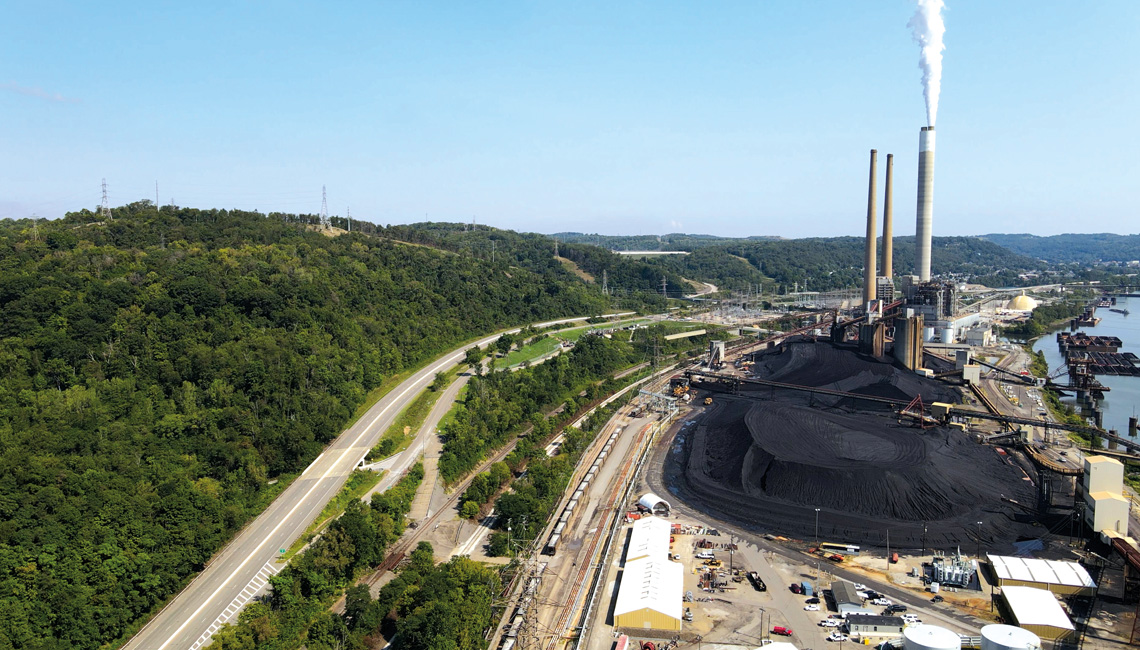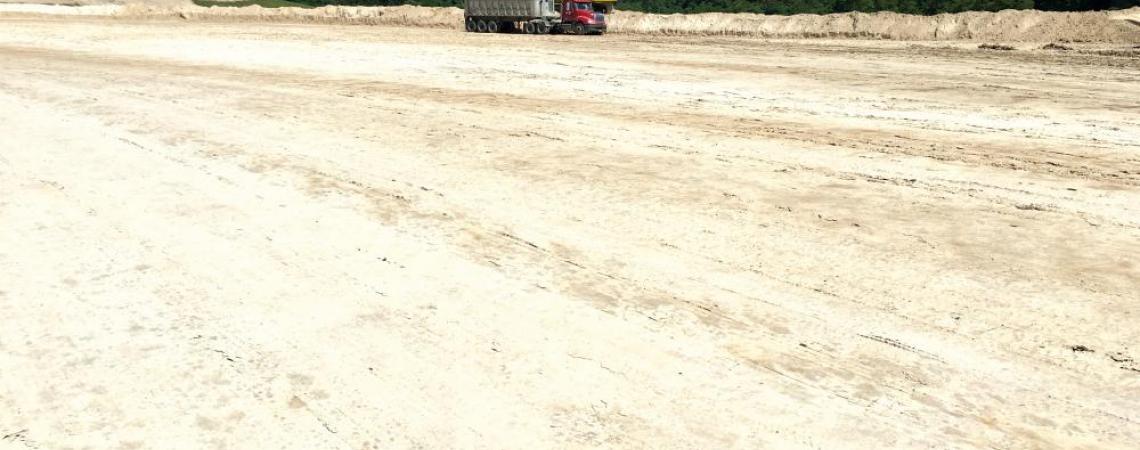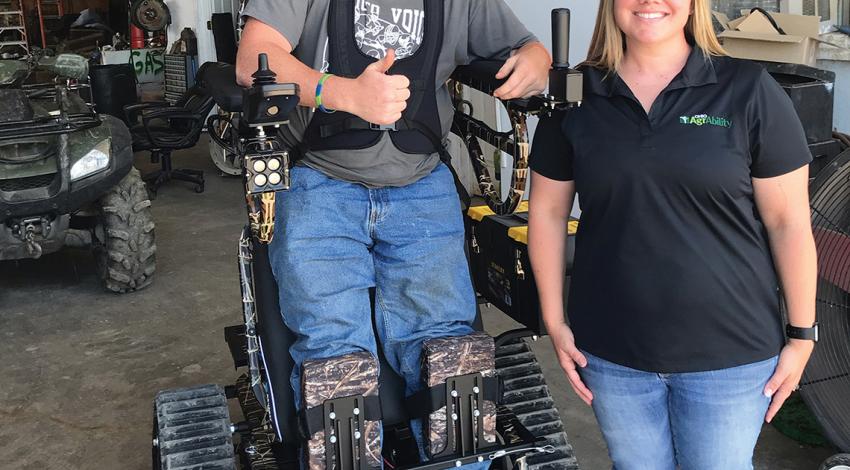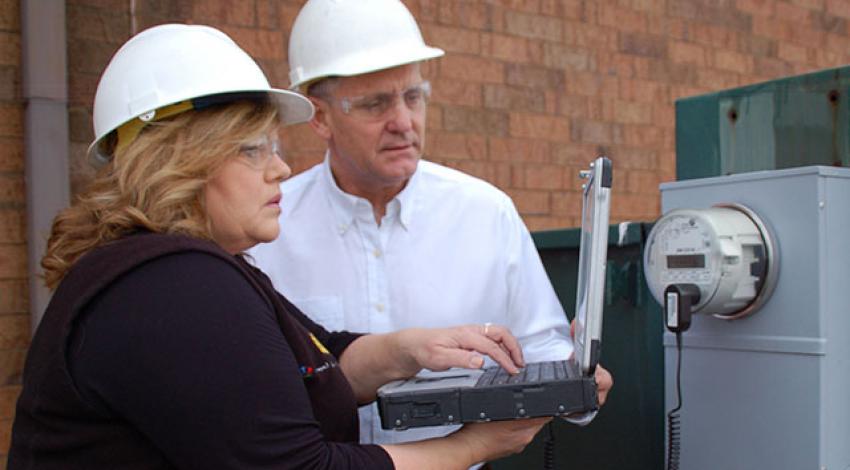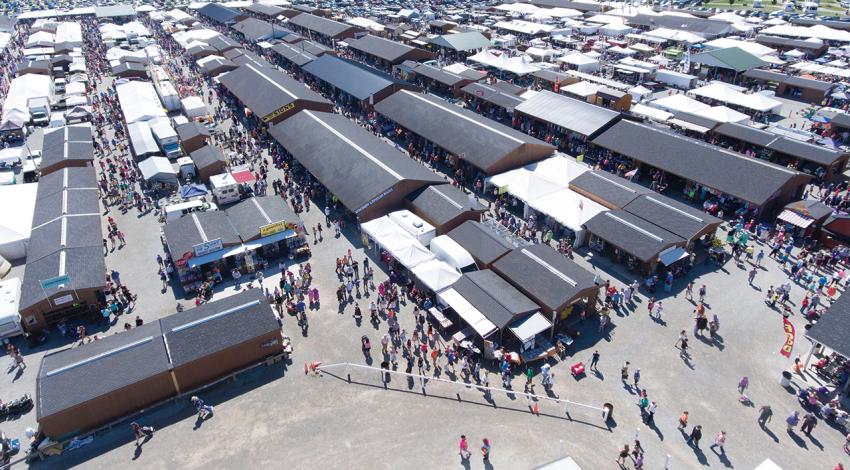The Cardinal Power Plant is difficult to miss. Perched along the Ohio River in Brilliant, the coal-burning generation station with its massive stacks is an iconic vision for anyone who traverses the Ohio River Scenic Byway between Martins Ferry and Steubenville.
The plant provides electricity to more than a million Ohioans who live and work in electric cooperative-served areas through Buckeye Power, the cooperative created by Ohio’s electric co-ops to provide the electricity they deliver to members. With close to 300 employees, it’s a major economic force in the region. It’s also an economic force for co-ops — beyond production of electricity that powers those co-op homes and businesses, it also produces marketable products that help keep its energy as affordable as possible.
Gypsum is loaded from this landfill near the Cardinal Plant in Brilliant and taken to market. This cell, which once was a small mountain of product, has now been removed entirely.
A byproduct with value
In simple terms, the act of combustion produces heat, water, and carbon dioxide, and depending on the fuel being burned — in this case, coal — there are other byproducts.
Ohio’s electric cooperatives have invested more than
$1 billion in environmental systems to keep most of those other byproducts contained. One such system, the scrubbers, removes sulfur dioxide and converts it to synthetic gypsum. Synthetic gypsum has many uses, and it’s a key component in wallboard used in homes and businesses.
A change in market
The United States construction industry is forecast to grow by between 5% and 8% over the next several years, according to industry studies. Coupled with the fact that a few other power plants have been shuttered, that creates a greater demand — and less available supply of — synthetic gypsum. “Buyers that may have at one time bought gypsum from a power plant that was nearby now have to go farther to find good-quality gypsum,” says Randy Keefer, director of fuel procurement and byproduct sales at Buckeye Power.
As demand for gypsum has grown, Cardinal Plant employees have set about improving the consistency and quality of the gypsum through the scrubbing process. “We go through a lot of testing to make sure that the gypsum we produce is within specification for buyers,” says Cardinal Plant manager Bethany Schunn. Currently, the plant is selling nearly all of its synthetic gypsum production due to high demand.
Reclamation
That demand has allowed Cardinal to sell gypsum that had previously been placed in the plant’s EPA-permitted, on-site landfill, which covers many acres. “Recently, the demand is so high that companies want us to dig older gypsum out of the landfill and sell it to them,” Schunn says. “We sell 35,000 to 40,000 tons a month from the landfill alone.”
“Thanks to the efforts and foresight of Cardinal’s landfill operators to keep gypsum segregated from other coal-combustion residuals, we’ve found that the quality of the landfill gypsum remains very good for wallboard production,” says Keefer. In fact, one of Cardinal’s landfill cells that once contained 400,000 tons of gypsum has been completely removed and sold. Workers are now digging into a second cell, which contains up to 1.4 million tons of gypsum — and the plant has a contract to reclaim and sell all of that as well.
Keefer says that’s a good thing, not only for the company but for the environment, since it delays the need to construct additional landfills. But it also helps control costs for members who get their electricity from Buckeye Power (see the blue box below).
“Buckeye Power is not-for-profit,” Keefer says. “We exist solely for the purpose of providing low-cost energy to our members. Anything that we can do to reduce our cost to produce electricity has a direct impact. It’s our job and goal to provide reliable, competitively priced energy for our members.”
Turning waste into dollars
In 2014, Cardinal Plant sold about 215,000 tons of synthetic gypsum, while more than 560,000 tons went into the landfill.
These days, it’s rare that any gypsum produced through the scrubbing process becomes landfill. Of more than 2 million tons of synthetic gypsum produced from 2019 to 2021, just a shade less than 99% was sold for wallboard, cement, or agricultural use. Gypsum sales are projected to account for nearly $13 million in revenue in 2022 and even more in 2023 and 2024.
But gypsum isn’t the only marketable coal byproduct, according to Buckeye Power’s Randy Keefer. Fly ash, the wispy substance left from burning coal, is an ingredient in concrete, while bottom ash, a much heavier, denser product, is used to treat snowy, icy roadways.
Sales of fly ash are projected to double to about
$1 million annually — perhaps more — in the next few years, while sales of bottom ash have been consistently about $100,000 per year.
While that may not make a huge difference on individual electric bills — maybe a couple of dollars to the average co-op member each month — it does contribute to the bottom line, and every bit helps.
